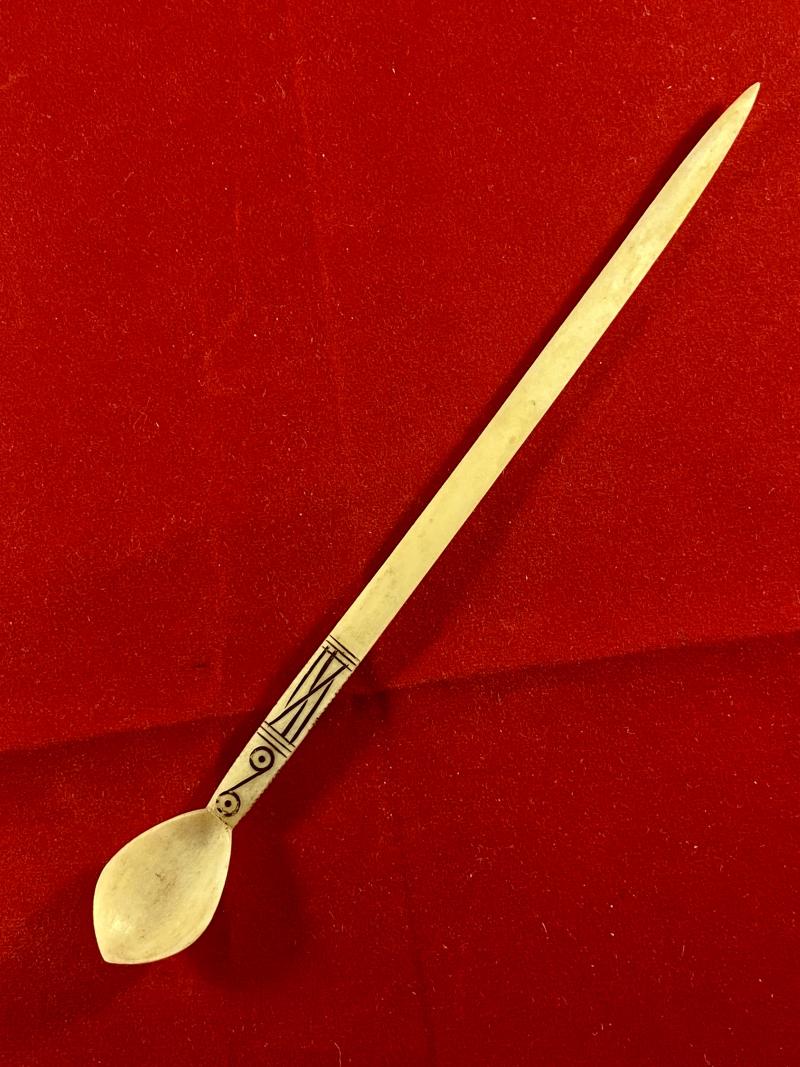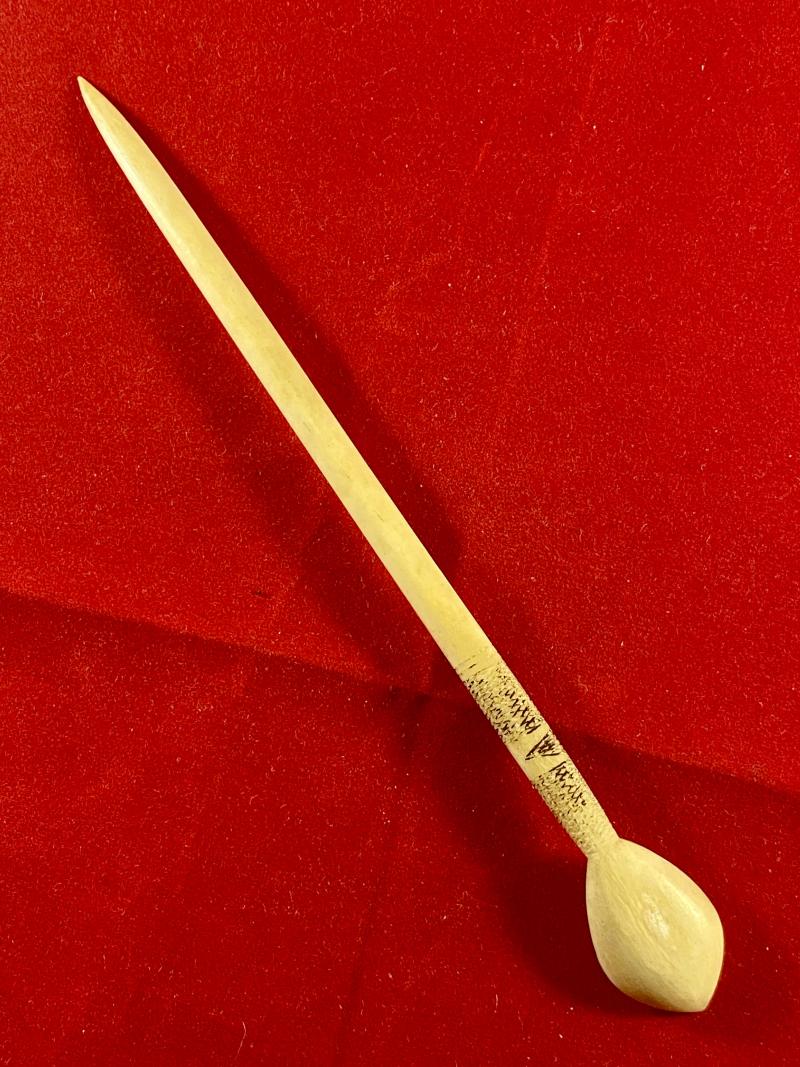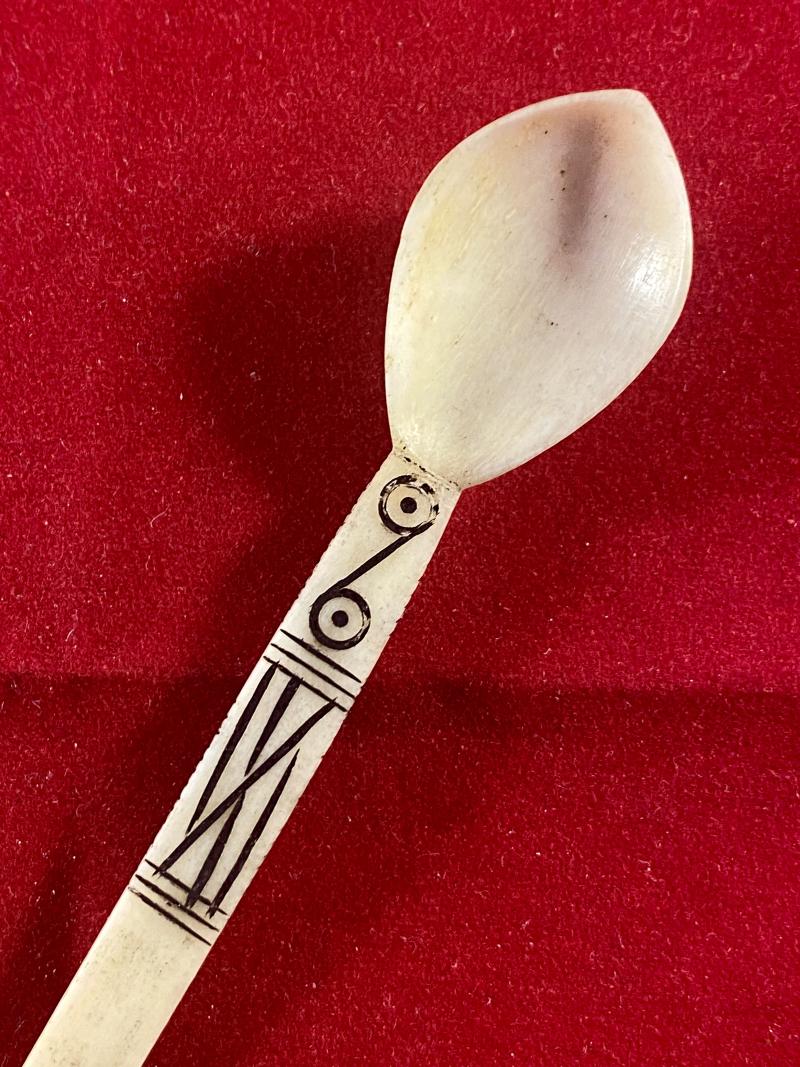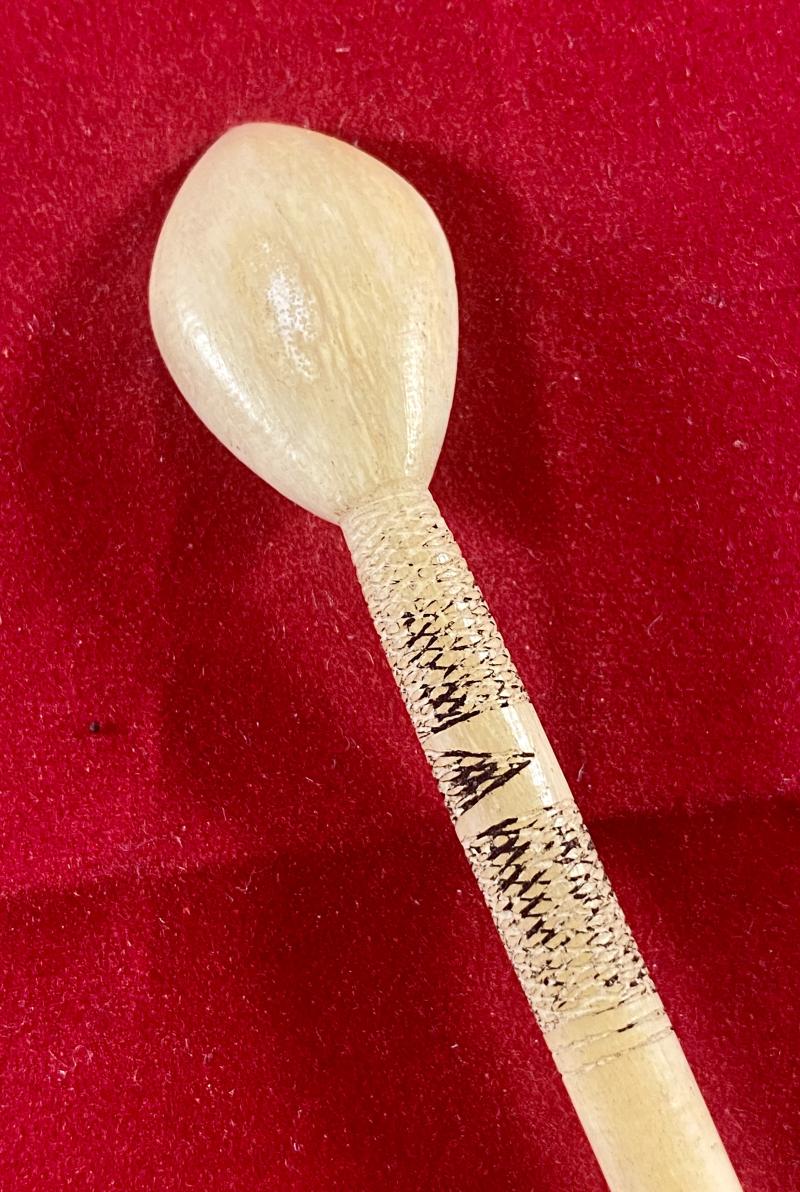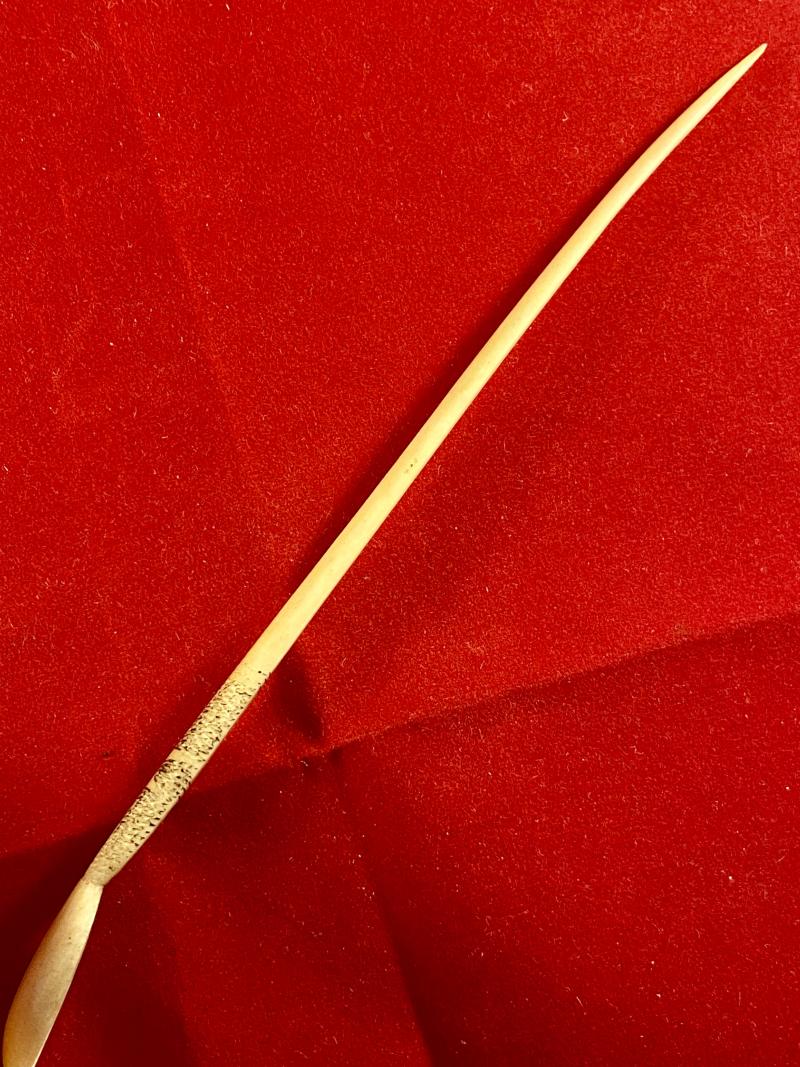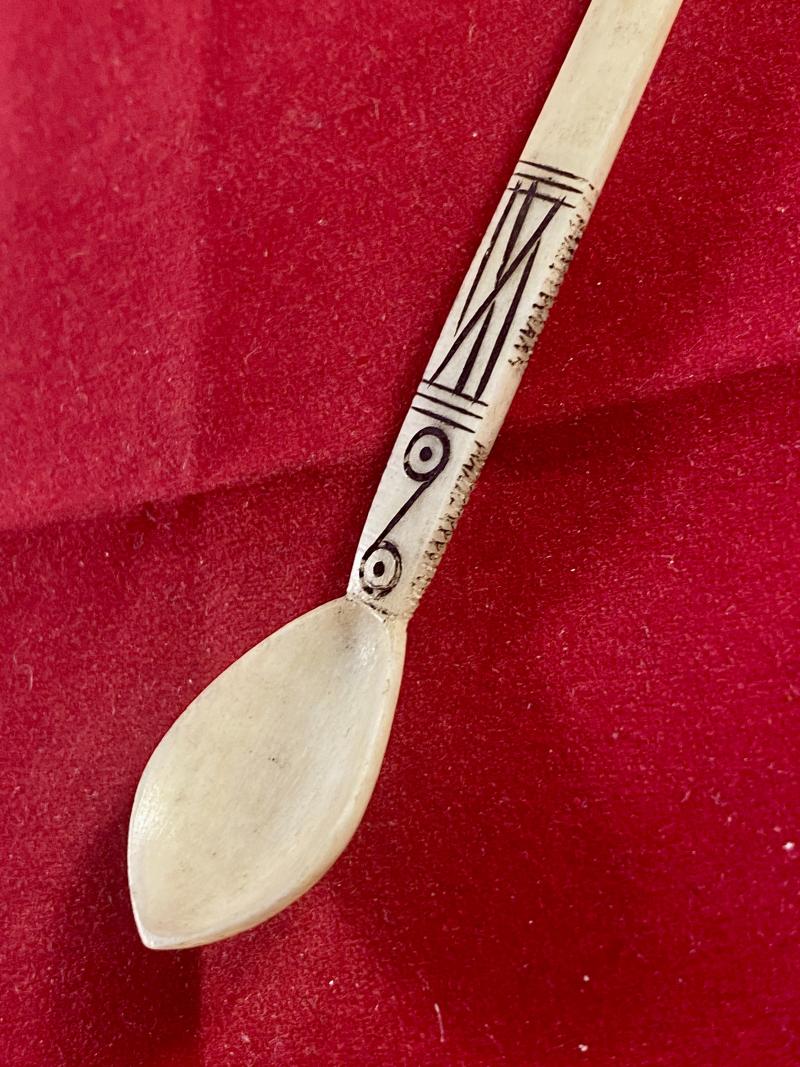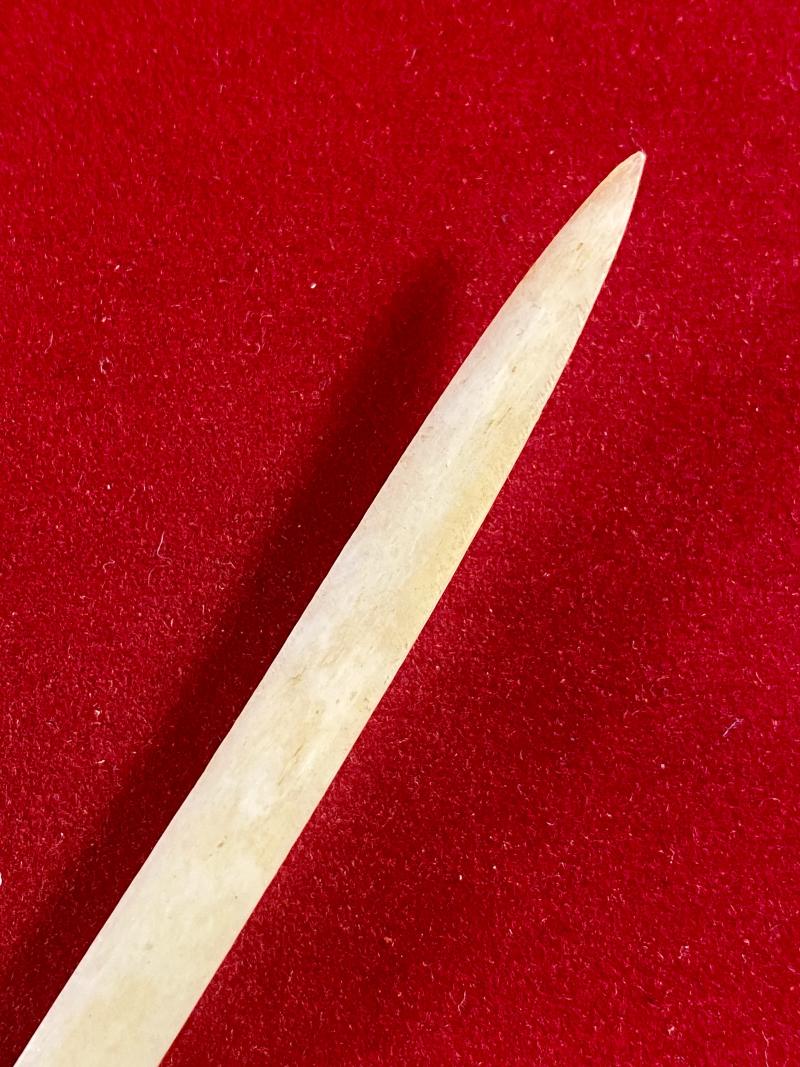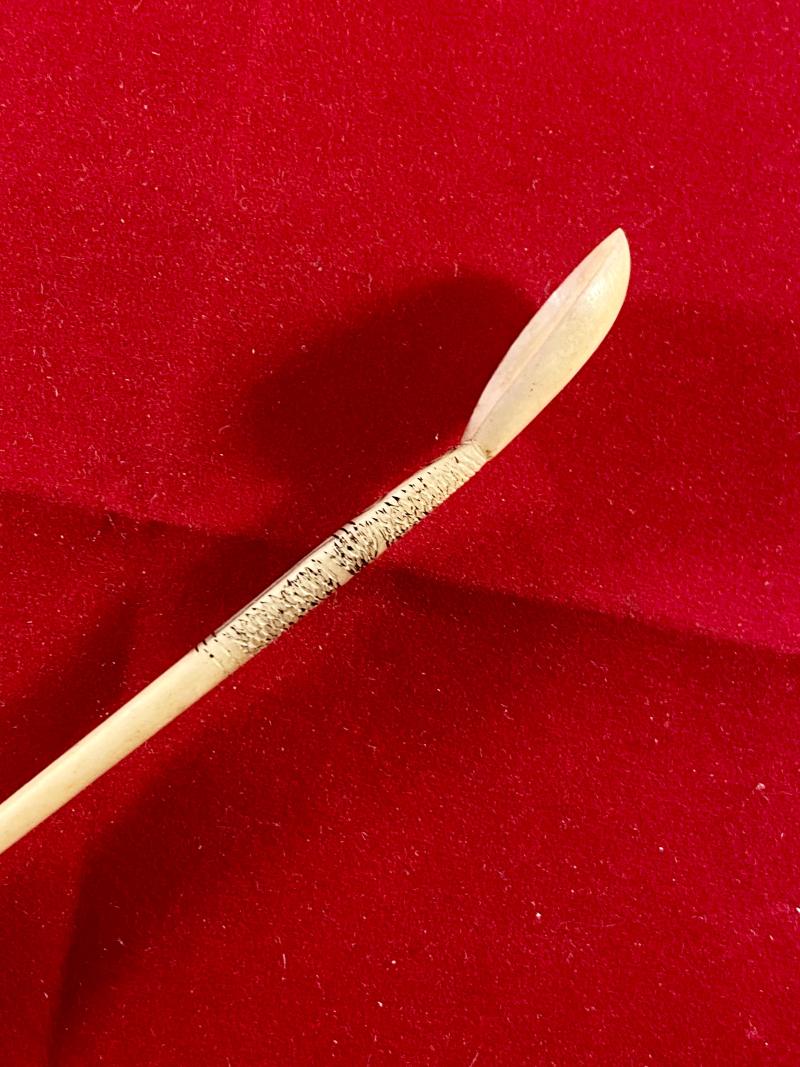Rare Antique South African Zulu Carved Bone Snuff Spoon circa 1900
Here on offer rare antique South African Zulu carved bone snuff spoon, probably made between 1880 and 1925, most likely circa 1900.
This fine example has a shallow, shield shaped bowl and a slender and slightly arched handle that is pointed at the tip.
It is likely carved from the rib bone of an ox or cow and is most likely from the Zulu culture of what is now KwaZulu-Natal province in South Africa.
It has an intricate incised graphic decoration on both sides where bowl and handle meet, which has a black pigment in the recesses to make the design pop out.
This type of spoon was also worn in the hair as a ‘hairpin’ when not in use as a snuff spoon.
The spoon is in excellent, undamaged condition and will make a great addition to any Zulu collection.
It measures 6” (15.3cm) long and weighs 4g..
Some history regarding snuff in South Africa.
Tobacco was introduced to southern Africa by Portuguese merchants in the sixteenth century, production, distribution and consumption expanded.
By the nineteenth century, tobacco was being used widely within indigenous communities across southern Africa, smoked in pipes or consumed in the form of snuff; produced by grinding dried tobacco leaves into a fine powder.
Snuff can be rubbed into the gap between the lip and gum or inhaled ‘snuffed’ into the nose to produce a brief high or, in larger quantities, hallucinations.
As consumption of snuff became popular with men and women. It also became incorporated into the religious practices of many southern African cultures, where it was used to enhance the connection to the spiritual realm and the ancestors.
Used for measuring out and ‘snuffing’ tobacco, the spoon’s design is practical, with a long, curved handle and deep bowl. The design is also aesthetic, in Zulu culture, decorated spoons such as this were worn in the hair by both men and women to express personal style, draw attention to physical attributes and convey social and marital status.
Photographs from the period show people adorned with a range of snuff-related items, including transportable containers, as well as intricately carved dispensing spoons that would double as hairpins or combs.
Under colonial rule, tobacco production became a major industry and cigarettes the chief mode of consuming tobacco. As nations gained their independence, the popularity of snuff and other tobacco products declined due to health concerns and government legislation.
Antique, carved bone snuff spoons were used by various African cultures for applying snuff, a powdered tobacco product, into the nostrils.
Snuff taking was a common practice in some African communities, and the spoons were not just tools but also held cultural and social significance. For instance, among the Zulu, they were sometimes used as hairpins and regarded as personal property.
They were used to scoop up and apply snuff into the nostrils. Some spoons were decorated with carvings, patterns, or other decorative elements.
Snuff was also central to the practice of traditional healers (iSangoma), who would use it to sharpen their clients senses and invoke the healing power of the ancestors. The iSangoma still use snuff for this purpose today.
Examples of these spoons can be found in museum collections, such as the British Museum and the Science Museum Group Collection.
Please see my pictures for the details of the condition, which complement this description.
Please see my TERMS OF BUSINESS regarding Deliver Charges and Insurance regarding additional insurance cover, should you require it, BEFORE the item is dispatched.
The responsibility lies with the customer to check with your Customs restrictions that this item can be imported into your country.
Thank you for taking the time to look.
Code: 51821
125.00 GBP

